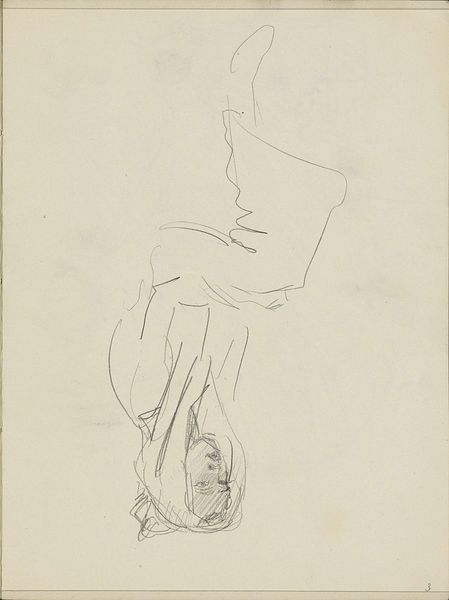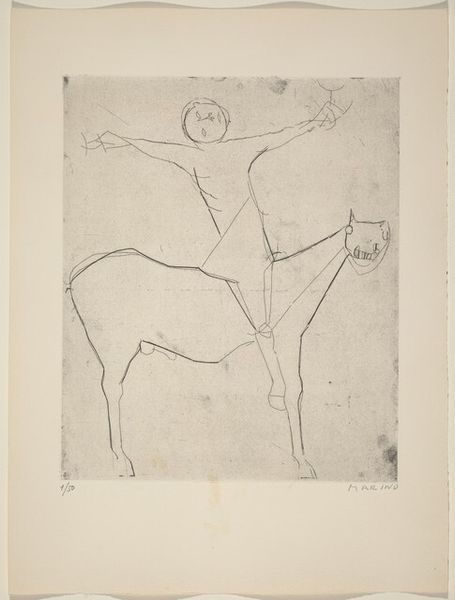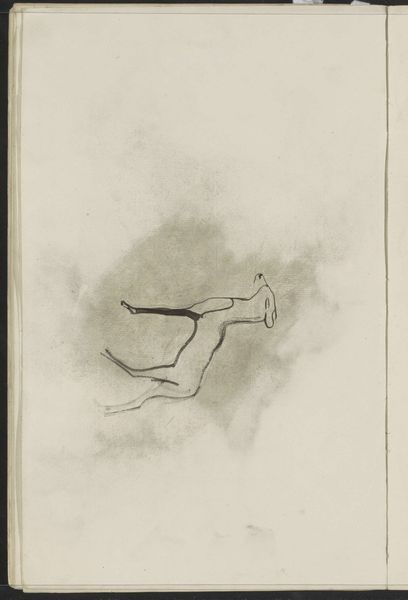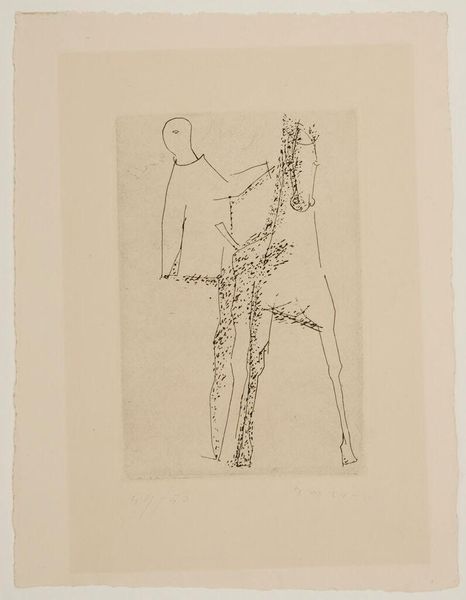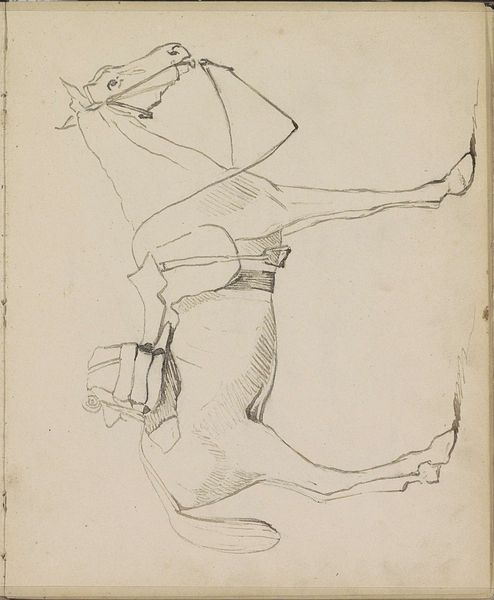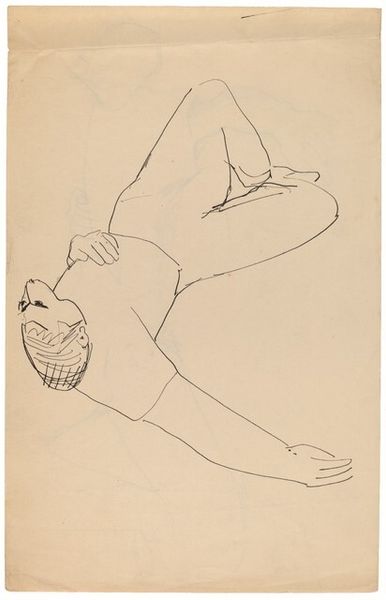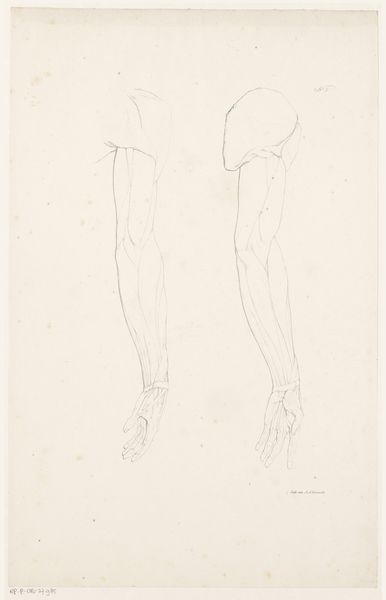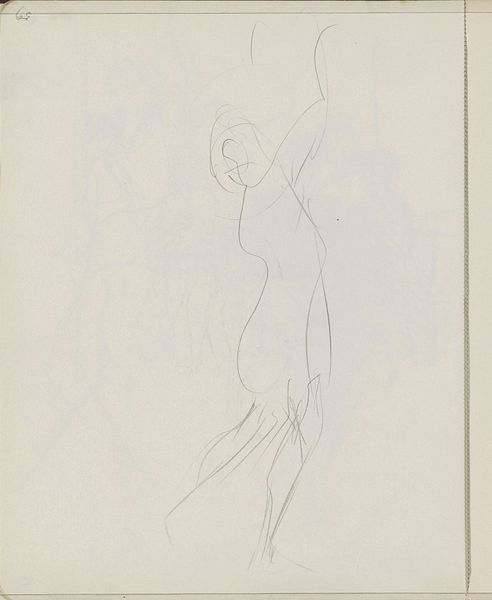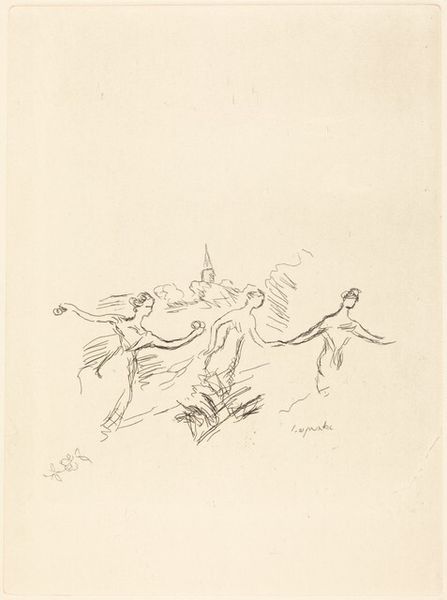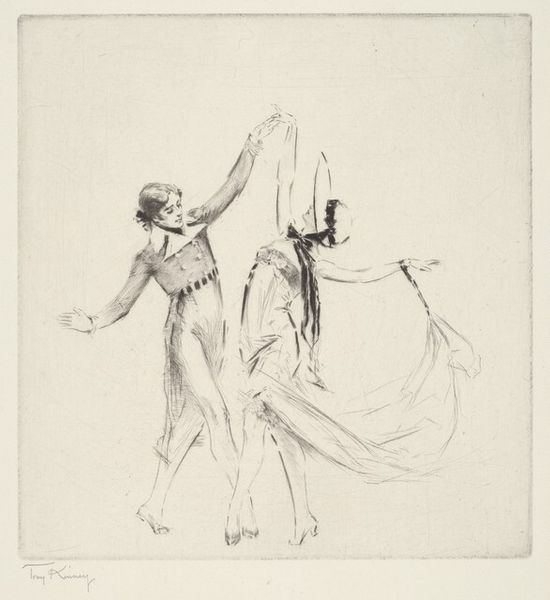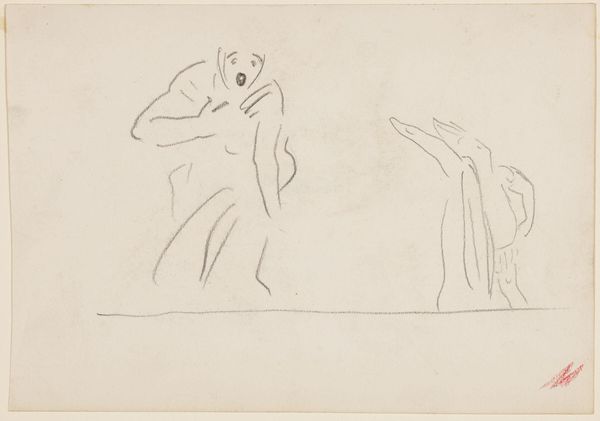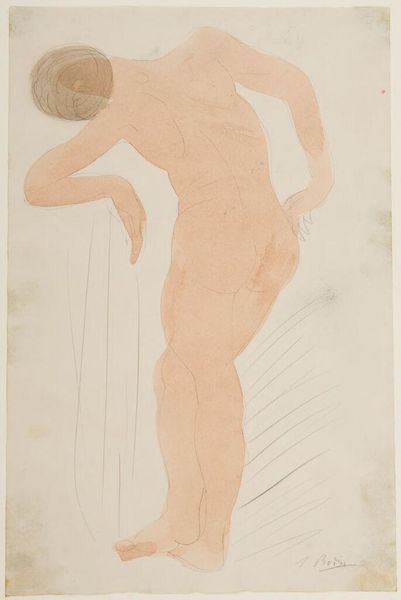
print, etching
#
ink drawing
# print
#
etching
#
figuration
#
line
#
modernism
Dimensions: plate: 35.8 x 29.6 cm (14 1/8 x 11 5/8 in.) sheet: 51.8 x 38.7 cm (20 3/8 x 15 1/4 in.)
Copyright: National Gallery of Art: CC0 1.0
Editor: This is Marino Marini's "Perception (L'Idée)," created in 1950, an etching printed on paper. It looks like a horse and rider, almost stick figures really, with strong, almost violent, energy. What's your take on this piece? Curator: It's crucial to remember that Marini was working in postwar Europe. "Perception" seems to embody a kind of collective trauma. We see the recurring motif of the rider falling from the horse throughout his oeuvre of the time. Think about what the image of the horse and rider usually conveys—control, power, mastery. Editor: Right, like equestrian statues of rulers. But this feels like the opposite of that! Curator: Exactly! Instead, we witness disruption, loss of control. This simple print encapsulates the widespread anxieties of the atomic age. Marini created the work in the post war cultural shift, where tradition and order were displaced in favour of experimental modes of expression that rejected conservative ideas of art making. He questions those symbols by fracturing form and representing them in a state of collapse. Editor: That makes so much sense. The broken lines and the sense of imbalance all speak to that. The reduction of form rejects academic techniques of illusion in art making. Curator: The rawness, the vulnerability—it speaks to a shared human experience of that time, a time of immense destruction but also immense change. Where would this kind of imagery be displayed and how would its role play in that context do you think? Editor: That's interesting to consider. Placed within a gallery context it becomes a social commentary and critique of institutional failure after the war. I see the influence that history has in interpreting modern art like this so clearly now. Curator: Exactly. Looking at art through its historical and social lens provides such vital perspectives. I find this work far more poignant considering its history and cultural impact.
Comments
No comments
Be the first to comment and join the conversation on the ultimate creative platform.
